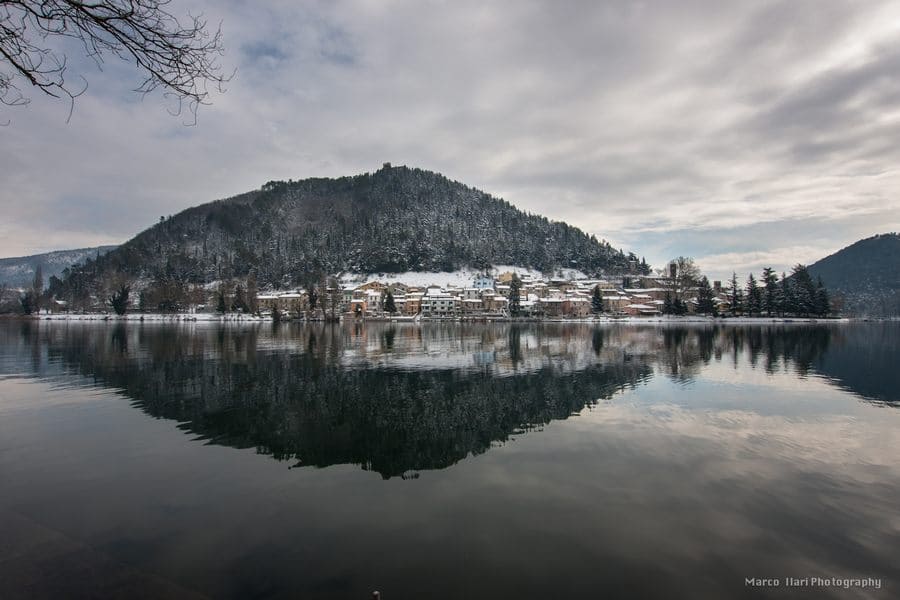Leaving San Gemini to follow the footsteps of St. Francis
The richness of Umbria includes not only its marvellous nature, the remains of the Roman period, its towns like Narni, Spoleto, Terni and Amelia where it is possible to enjoy a journey through various historical periods, but also its spiritual heritage.
In Umbria born and lived Saint Francis a charismatic figure both for Christians and for every open-minded and open-hearted man.
The Saint of Assisi is a man who knew the pleasures and vices of the world and founded its peace in the simplicity and in the respect for every living creature and the world that hosts it. A universal teaching that crosses the boundaries of religion.
A break in the village of San Gemini represents an excellent opportunity to get closer to the figure of this Saint covering one or more stages, depending on your training or on the passion for trekking, of the St. Francis’ Way.
This route allows you to follow the footsteps of St. Francis to discover the places he loved but also to start a journey through yourself.
So, discover everything on the St. Francis’ Way.
The St. Francis’ Way, its peculiarities
The St. Francis’ Way is a route that winds through Umbria and ends in Assisi, the city where this Saint born and died.
This journey can be undertaken starting from the La Verna Sanctuary in Tuscany or from Rome and its total length is 276 km, that can be covered in different stages, the shortest ones measure approximatively 10 km while the most demanding ones can reach 25-30 km.
The main part of the St. Francis’ Way is immersed in the uncontaminated Umbrian nature and includes dirt roads that cross fields, valleys, hills and mountains to reach towns and cities such as, for example, Gubbio, Spoleto, Foligno, Citerna and Terni where to visit churches and monuments dedicated to the Saint.

San Gemini and the St. Francis’ Way
The medieval village of San Gemini is located in a perfect position to reach some stages of the St. Francis’ Way as the alternative route Greccio-Terni and Terni-Arrone. This last stage is, for example, very evocative as it runs along the Marmore WaterFalls and crosses the Nera River Park characterized by impervious and rocky valleys.
One of the characteristics of the St. Francis’ Way is that to grasp the beauty and mysticism of these areas it is enough to choose one of its stages and cross it even partially, based on your training and your own physical conditions.
The whole St. Francis’ Way is dotted with unique landscapes immersed in the surreal quiet of Umbrian nature. Whether you walk for 5, 10 or 50 km you live a unique experience capable of regenerating your mind and spirit, thanks also to the possibility of meeting pilgrims from all over the world and exchange experiences, impressions and opinions.

The road signs along the St. Francis’ Way
In recent years, a great effort has been made to position precise road signs along the whole St. Francis’ Way to allow travellers to easily follow this route.
Today it is possible to follow this Franciscan path by relying on numerous road signs consisting of yellow and blue strips painted on rocks and walls and metal signs made of the same colour.
A recurring symbol on the St. Francis’ Way is the TAU, the last letter of the Greek alphabet whose shape is similar to a cross and for this reason loved and used by the Saint.
The Pilgrim’s documents, an ancient tradition
If you decide to walk along the whole St. Francis’ Way you can ask for official documents proving this incredible experience.
The Credential is a travel document used by pilgrims to collect the dates and stamps of the place of hospitality as proof of their pilgrimage while the Testimonium is a certificated given in Assisi at the end of the journey.
The origin of the Testimonium dates backs to the early Middle Ages when pilgrimage can be imposed for judicial reasons and the condemned must demonstrate to have served the sentence.
Among the official documents of the St. Francis’ Way, there is also the Four-legged Pilgrim Certificate given to all the dogs that face the journey with their families. This choice has been made to celebrate the special relationship between St. Francis and the wolf, that from ferocious beast turned into a meek creature in his presence.
The stages of the St. Francis’ Way
The St. Francis’ Way can be undertaken from North or South, it follows the list of all its stages and alternative routes with their respective lengths:
Northen Way
- La Verna – Pieve Santo Stefano, 14,9 Km
- Pieve Santo Stefano – Sansepolcro, 35,17 Km
- Sansepolcro – Citerna, 12,17 Km
- Citerna – Città di Castello, 19,9 Km
- Città – Castello a Pietralunga, 29,535 Km
- Pietralunga – Gubbio, 26,145 Km
- Gubbio – Valfabbrica, 38 Km
- Valfabbrica a– Assisi, 13,46 Km
Southern Way
- Roma – Monte Sacro, 15,21 Km
- Monte Sacro – Monterotondo, 18,05 Km
- Monterotondo – Ponticelli di Scandriglia, 28,885 Km
- Ponticelli di Scandriglia – Poggio San Lorenzo, 20,41 Km
- Poggio San Lorenzo – Rieti, 21,815 Km
- Rieti – Poggio Bustone, 17,794 Km
- alternative route Rieti – Greccio, 23,45 Km
- alternative routeGreccio – Terni, 21,925 Km
- alternative route Terni – Arrone, 15,7 Km
- Poggio Bustone – Piediluco, 22,041 Km
- Piediluco – Arrone, 12,987 Km
- Arrone – Ceselli, 14,635 Km
- Ceselli – Spoleto, 16,24 Km
- Spoleto – Poreta, 15,55 Km
- Poreta – Trevi, 12,075 Km
- Trevi – Foligno, 12,448 Km
- Foligno – Assisi 19,345 Km
